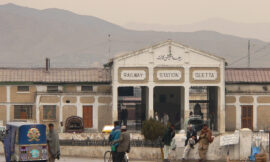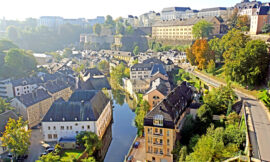The Ho Chi Minh Mausoleum, an imposing structure located in Ba Dinh Square, Hanoi, stands as a solemn tribute to the revolutionary leader and founding father of modern Vietnam, Ho Chi Minh. Erected in honor of his contributions to the nation’s struggle for independence and his role in shaping its destiny, the mausoleum holds immense cultural, historical, and political significance for the Vietnamese people.
The construction of the Ho Chi Minh Mausoleum commenced shortly after Ho Chi Minh’s death on September 2, 1969. Designed by Vietnamese architect Nguyễn Văn Thê, the mausoleum was built using marble and granite sourced from various regions of Vietnam. Its architectural style is characterized by simple, geometric shapes and clean lines, reflecting the socialist principles espoused by Ho Chi Minh.
The mausoleum’s design embodies the reverence and respect accorded to Ho Chi Minh, with its monumental scale and austere façade evoking a sense of solemnity and dignity. The structure is flanked by towering columns and guarded by ceremonial soldiers, adding to its grandeur and significance as a national monument.
The centerpiece of the Ho Chi Minh Mausoleum is the preserved body of Ho Chi Minh himself, embalmed and on display within a glass sarcophagus. The embalming process, carried out by Soviet experts, has preserved Ho Chi Minh’s remains remarkably well, allowing visitors to pay their respects to the revered leader decades after his passing.
Visitors to the mausoleum are required to adhere to strict rules and protocols, including maintaining silence and proper decorum while inside the building. Cameras and recording devices are prohibited, and visitors must dress modestly as a sign of respect for the deceased. The solemn atmosphere within the mausoleum is further enhanced by the presence of guards who maintain a watchful vigil over Ho Chi Minh’s remains.
Surrounding the Ho Chi Minh Mausoleum are lush gardens and manicured lawns, providing a tranquil setting for contemplation and reflection. The serene ambiance of the surroundings contrasts with the bustling cityscape of Hanoi, offering visitors a moment of respite from the chaos of urban life.
Adjacent to the mausoleum is the Ho Chi Minh Museum, which houses a vast collection of artifacts, documents, and memorabilia related to Ho Chi Minh’s life and legacy. Exhibits within the museum trace Ho Chi Minh’s journey from his early years as a revolutionary to his pivotal role in leading Vietnam to independence and reunification. Visitors can explore interactive displays, multimedia presentations, and historical photographs that offer insights into Ho Chi Minh’s vision for Vietnam and his enduring legacy as a national hero.
The Ho Chi Minh Mausoleum serves as a symbol of unity, patriotism, and national pride for the Vietnamese people, embodying the ideals and aspirations of a nation forged in the crucible of struggle and sacrifice. It stands as a testament to the enduring legacy of Ho Chi Minh and his unwavering commitment to the cause of liberation and social justice. As a revered pilgrimage site and a focal point of national identity, the mausoleum continues to inspire reverence and respect among generations of Vietnamese and visitors from around the world.



